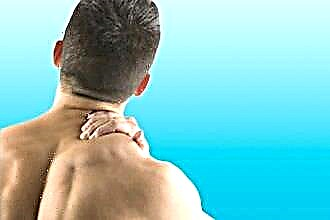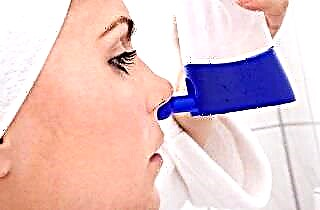The trachea is part of the respiratory system and is considered one of the lower airways. It is a tube from 9 to 12 cm long, which is formed by cartilaginous rings connected by fibrous ligaments. The occurrence of painful sensations in the area of the trachea can be explained by various reasons - in this case, most often, as a rule, infectious and inflammatory pathologies are found. Pain can bother patients of different age groups - both men and women. If the trachea hurts, it is important to diagnose and begin treatment as soon as possible.
Causes
 Tracheal pain is a symptom that cannot be taken as a sign of any particular disease, since it is quite nonspecific. The trachea is an anatomical formation that has several departments. It is important to differentiate soreness in the trachea from discomfort in the esophagus, which is located nearby. It is also necessary to distinguish between complaints of pain in the trachea and pain in coronary heart disease.
Tracheal pain is a symptom that cannot be taken as a sign of any particular disease, since it is quite nonspecific. The trachea is an anatomical formation that has several departments. It is important to differentiate soreness in the trachea from discomfort in the esophagus, which is located nearby. It is also necessary to distinguish between complaints of pain in the trachea and pain in coronary heart disease.
Why can the trachea hurt? There are several main reasons:
- Infectious tracheitis.
- Foreign body of the trachea.
- Inflammation of the cartilage of the larynx
- Acute and subacute thyroiditis.
- Mediastinitis.
The cause of pain can also be osteochondrosis of the cervical and / or thoracic spine. Since the trachea is located in the anatomical space next to other structures, it is often difficult, on the basis of complaints alone, to differentiate tracheal lesions from other pathological processes in which it remains unaffected.
Pain with damage to the trachea is localized behind the sternum, as well as in the larynx.
To establish a diagnosis, you need a comprehensive examination. An objective examination cannot be dispensed with - in some cases, visualization techniques are used, including tracheobronchoscopy.
Infectious tracheitis
Inflammation of the tracheal mucosa is common. Tracheitis often becomes a component of the respiratory syndrome in a variety of infectious diseases. It is worth noting that in most cases it is provoked by viruses, although the pathological process may also be of a bacterial nature. Tracheitis is observed in isolation or as a sign of ARI (acute respiratory infection).
What are the characteristics of pain syndrome in acute infectious tracheitis?
- Lack of painful sensations at rest.

- Provocation of pain by coughing.
- Localization behind the sternum, as well as in the anterior surface of the neck.
Breathing, especially when inhaling deeply, can cause coughing - and therefore soreness. Sometimes patients try to check their own feelings by pressing on the neck. It can also increase pain, especially when trying to swallow while pressure is applied. However, this manifestation cannot be regarded as a full-fledged symptom that is significant for diagnosis.
Tracheal foreign body
More than 90% of cases of foreign bodies entering the trachea are recorded among patients under the age of 5 years. Children inadvertently can inhale small objects: sunflower seeds, pumpkin seeds, corn kernels, fish scales. In childhood, the protective reflexes of the pharynx and larynx are not fully formed - in addition, the distance from the dentition to the trachea is less than in adults. However, the suspicion of a tracheal foreign body in an adult is also not always groundless. The lumen of the organ is wider and can accommodate larger elements without the threat of immediate asphyxiation (suffocation): coins, teeth, cufflinks. Conditions for aspiration are created in a state of alcoholic intoxication, deep sleep, and fainting.
There are several patterns regarding foreign bodies:
- large ones are located in the trachea;
- small ones penetrate deeper into the lumen of the bronchi;
- when localized in the trachea, it is possible to ballot (move) the object.
In addition to pain in the front of the neck and sternum, paroxysmal cough is also a typical symptom.
When the foreign body is ballot, a popping sound may be heard, even at a distance from the patient. It is worth noting that pain and coughing decrease or disappear if the foreign body is fixed and remains motionless. However, this is a temporary phenomenon. During a cough, an object can move not only down to the bronchi, but also up to the larynx, which threatens the patient with asphyxiation as a result of his entrapment between the vocal folds.
Inhalation pain is associated with recurrence of the coughing fit. A foreign body, moving around, irritates the mucous membrane. If you press on the tracheal projection site, the patient feels an increase in pain - however, it is best to refuse such manipulation. It does not help to remove an object that has fallen into the trachea and, on the contrary, can contribute to the aggravation of the degree of damage.
Inflammation of the cartilage of the larynx
Although pathological changes are observed from the larynx, it can be mistakenly assumed that the symptoms are triggered by a tracheal disease. Inflammatory lesion of the cartilage of the larynx is called chondroperichondritis and occurs when the perichondrium or cartilage is infected:
- as a result of injury to the larynx with damage to the cartilage;
- as a result of surgery;
- after radiation therapy.
The site of inflammation is clearly limited when one of the cartilages is involved in the pathological process, but when all cartilaginous structures of the larynx are affected, changes are also observed in the soft tissue area. The pressure on the front of the neck causes pain - it can be quite intense.
Acute and subacute thyroiditis
Thyroiditis is an inflammation of the thyroid gland. The acute process is provoked by a bacterial infection, the subacute process is associated with viral diseases. In the first case, there is a risk of abscess formation, in the second - destruction of the gland tissue and its fibrosis (scarring).
Purulent inflammation is accompanied by extensive edema and severe pain sensations against the background of intoxication syndrome. With subacute thyroiditis, there is a moderate increase in the thyroid gland, and soreness is provoked by its stretching. With thyroiditis, the trachea is not affected, therefore, the patient usually does not experience a cough or pain when breathing, noting at the same time pain when pressing on the neck area.
Mediastinitis
 This disease, like thyroiditis, does not directly affect the trachea and implies the presence of an inflammatory process in the tissue of the mediastinum. However, one of the probable reasons for its development may be damage to the trachea during the introduction of a foreign body, as a result of trauma, during surgery. Pain syndrome is characterized by:
This disease, like thyroiditis, does not directly affect the trachea and implies the presence of an inflammatory process in the tissue of the mediastinum. However, one of the probable reasons for its development may be damage to the trachea during the introduction of a foreign body, as a result of trauma, during surgery. Pain syndrome is characterized by:
- The presence of throbbing pain.
- Localization of pain at the base of the neck, behind the sternum.
- Increased pain when throwing the head back.
The intensity of pain increases with inhalation, swallowing.
Pain in the trachea area when pressing on the sternum and the base of the neck increases, as if outlining the boundaries of pathological changes; it also appears when tapping the named area. It occurs against the background of general weakness, an increase in body temperature. Irradiation to the interscapular region is likely (with posterior mediastinitis).
Any form of pain syndrome must be differentiated, since pain itself cannot serve as the only criterion for confirming the diagnosis.Pressure on the affected area increases the severity of pain in most pathological processes, so it is worth evaluating all the symptoms in the clinical picture, and not just individual signs. To find out the cause of the pain, you need a full-time examination by a doctor.




